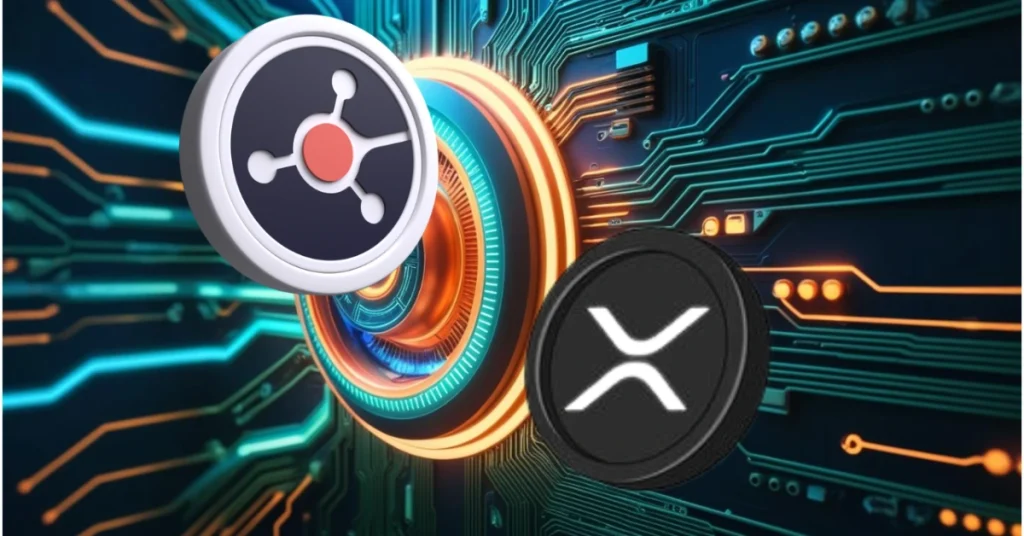Real Yield Wins as Tokenized RWA Projects Outperform Traditional DeFi



The post Real Yield Wins as Tokenized RWA Projects Outperform Traditional DeFi appeared first on Coinpedia Fintech News
Savvy investors recognize that portfolio diversification is crucial for achieving successful and optimally sustainable investment returns while mitigating risks. However, monitoring, organizing, comprehending, and optimizing the returns from a diverse set of assets presents its own challenges. This rings as true as ever now that DeFi assets are part of the equation. Unpredictable and highly variable returns make DeFi ROI a bit more challenging to understand than the returns on many other asset types.
Essentially, ROI is a metric for finding whether an asset has appreciated or depreciated. It’s quite simple at its core – compare the asset’s current monetary worth to the price the investor paid to acquire it. ROI is a straightforward calculation that reveals any changes in the value of an asset over time, helping the holder determine whether they’re satisfied with the yield and whether they want to continue holding it, sell it, or make another investment. Most investors will avoid or get rid of holdings with ROIs that are insufficient or in the red.
The difficulty and ambiguity in calculating DeFi ROI
To calculate ROI as a percentage, you subtract the asset’s initial value from its current monetary value, divide that number by the former value, and then multiply the result by 100. However, it’s rarely that simple with DeFi assets. You typically want to understand the ROI on an asset in the context of your diverse portfolio, which usually means seeing the metric in stablecoins or a fiat currency. It’s not sufficient to calculate ROI to convert the value of an asset to your currency of choice, as DeFi assets are purchased using cryptocurrency.
The inherent volatility of crypto additionally impedes the process of calculating the returns on a DeFi asset. The value of the cryptocurrency will likely have changed dramatically even if you do find out what the returns on a DeFi investment are.
RWA projects present a safer yield opportunity
None of the above detracts from DeFi’s advantages: openness, transparency, lack of intermediaries, efficiency, innovation, and potentially impressive returns. Tokenized real-world assets, such as real estate, fine art, and clean energy infrastructure monetized by EcoYield Energy, present a safer yet compelling yield opportunity. Combined with DeFi’s advantages, their more grounded nature can generate real yield that is more predictable, stable, and secure.
Key factors influencing ROI include the cash flow generated by the investment, ongoing maintenance expenses, and the initial investment amount. It’s far easier to measure the returns on real-world assets. Their value might not be fixed, but it’s much more stable and predictable. ROI is measured as a percentage, making it easy to compare with other investment returns and allowing the holder to compare various investment types with each other.
EcoYield Energy, a platform tied to tangible, revenue-generating assets, was founded on the belief that everyone should have the opportunity to participate in clean energy funding, a process currently hindered by bureaucracy. The platform connects investors across the globe with legitimate and potentially lucrative renewable energy projects, enabling them to finance solar and battery projects and access verifiable, on-chain yields.
The Hull 100kW Rooftop Solar Project in the UK is being funded through the platform, among others. The construction-ready project offers stable returns with an estimated annual percentage yield (APY) of 25%, a projected carbon offset of 40 metric tons per year, and monthly stablecoin payouts.
EcoYield aggregates contributor funds in fiat or the stablecoin USDC, deploys these funds into verified battery energy storage and solar projects, collects real-world revenue, and distributes the returns back to users. The annual yield on EcoYield projects in USDC ranges from 10% to 25%, and staking $EYE tokens can further boost these rates. The platform offers real revenue, as opposed to the speculative inflation inherent in DeFi, with yield sourced from actual renewable energy sales and transparent, DAO-governed infrastructure. Essentially, EcoYield aims for real assets, real yield, and real impact on the environment.
Tokenized RWAs outperform the median DeFi yield
The average combined annual yield of tokenized RWAs is 10.13%, a great deal higher than the 8% median DeFi yield across blockchains and protocols. RWA projects had generated active loans of more than $12 billion and total lending of $22.42 billion as of January 2025.
These numbers represent real capital flowing into carbon offset projects, SMEs, real estate, and fintech, with approx. 2,500 loans solely from emerging markets. DeFi users have access to a market worth $1.6 trillion, traditionally dominated by institutional investors, which is largely driven by tokenized private credit. They can earn real yield by investing in private loans to businesses, bridging the gap between real-world economic activity and on-chain capital.
Many tokenized RWA projects offer APYs exceeding 10%, which is attractive to investors seeking high returns. The returns stem from revenue-generating assets, real estate-backed loans, and private credit markets integrated into DeFi protocols. The returns on real estate-backed loans range from approx. 9% for short-term loans to 12.5% for ones with a term of three years. For investors with higher risk tolerance, the yield on junior tranches in real estate loans can be up to 48%.
Sustainable yield underlies DeFi’s shift to RWAs
DeFi was known for its insane APYs for years, sometimes exceeding 100% on stablecoins; however, the majority of the projects were unsustainable. Unpredictable lending rates crashed with market cycles. Some DeFi projects would promise as much as 4,000% APY, but most rewards didn’t come from actual revenue but token emissions. Yields collapsed once rewards dried up, and so did the projects.
Gone are the days of sky-high APYs from unsustainable emissions. High-yield DeFi now relies on revenue from real-world assets. Green energy infrastructure, treasuries, and real estate are bringing yields from traditional into decentralized finance. RWA investment platforms focus on high-quality, risk-adjusted lending. The APYs are humbler but remain considerable and, more importantly, stable. RWA projects resemble traditional investments but without intermediaries taking substantial cuts. For all these reasons, they are expected to dominate the next phase of DeFi.

Story (IP) Price Plunges While Trading Volume Spikes Over 200%; What’s Going On?
The post Story (IP) Price Plunges While Trading Volume Spikes Over 200%; What’s Going On? appeared f...

Is RXS the Best Low-Cap Bet for the 2025 Bull Market?
The post Is RXS the Best Low-Cap Bet for the 2025 Bull Market? appeared first on Coinpedia Fintech N...

Is Ruvi AI (RUVI) the New Ripple (XRP)? Experts Say Its Audited Token Might Reach The Charts Heights This Year
The post Is Ruvi AI (RUVI) the New Ripple (XRP)? Experts Say Its Audited Token Might Reach The Chart...

